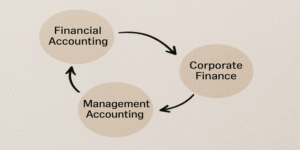Job hunting in today’s dynamic and competitive employment landscape requires much more than sending out a few applications. It demands strategic planning, self-awareness, and a proactive mindset to stand out from hundreds of applicants. With the rise of digital recruitment tools, remote work, and skills-based hiring, candidates must now demonstrate adaptability, strong communication, and continuous learning to enhance their employability. This article outlines key skills and strategies that significantly improve one’s chances of success when searching for the ideal job, supported by evidence from academic research and practical experience.
1.0 Networking
Networking remains one of the most effective job search strategies. Hansen, Oliphant and Oliphant (2021) reveal that up to 70% of job opportunities are secured through networking rather than traditional applications. This reflects the importance of relationship building in accessing the hidden job market—opportunities not advertised publicly.
Attending industry conferences, joining professional associations, or participating in online platforms like LinkedIn can help expand professional connections. Engaging in these spaces allows individuals to stay updated with industry trends, receive recommendations, and discover opportunities through referrals. For example, a marketing graduate might attend a local Chartered Institute of Marketing (CIM) networking event, where a casual conversation could lead to an internship or job offer.
Networking also enhances one’s visibility and credibility within their field, signalling initiative and enthusiasm—traits that employers find highly valuable (Ferrazzi & Raz, 2005).
2.0 Research
Effective research is central to a successful job hunt. This involves learning about a prospective employer’s values, culture, goals, and market position. As Cottrell (2019) explains, understanding an organisation in depth allows candidates to tailor their applications and show genuine interest.
For example, referencing a company’s sustainability initiatives in a cover letter demonstrates alignment with their mission and can distinguish an applicant from others. Moreover, researching competitors and industry trends prepares candidates to discuss relevant issues confidently during interviews (Huang, 2010). Employers value candidates who demonstrate curiosity and initiative—indicators of long-term engagement and potential leadership.
3.0 CV and Cover Letter Writing
A CV (curriculum vitae) is often a candidate’s first opportunity to make a strong impression. Jackson and Wilton (2017) note that recruiters spend an average of six to thirty seconds scanning each CV, highlighting the importance of clarity, relevance, and structure. A well-crafted CV must be concise, tailored to the job description, and include quantifiable achievements (e.g. “increased sales by 20% through digital campaigns”) rather than vague descriptions.
Alongside the CV, a cover letter offers an opportunity to inject personality and convey motivation. Hargie (2023) stresses that an effective cover letter should use clear, persuasive, and professional communication to demonstrate not just competence, but enthusiasm and cultural fit. Employers often use the tone and structure of a cover letter to assess written communication skills—a vital component in nearly all professional settings.
4.0 Interview Preparation
Interview preparation is crucial in converting an application into a job offer. Preparation includes researching the organisation, rehearsing responses to common questions, and identifying questions to ask the interviewer. Huang (2010) recommends practising through mock interviews to enhance fluency, confidence, and control of body language.
Equally important are non-verbal communication cues—maintaining eye contact, sitting upright, and listening attentively all reinforce confidence and professionalism.
Employers also assess cultural alignment and emotional intelligence (EI) during interviews. Demonstrating empathy, adaptability, and positive communication helps build rapport with interviewers and differentiates candidates with similar technical skills (Goleman, 2018).
5.0 Communication Skills
Effective communication—both written and verbal—is essential at every stage of the job search process. Whether composing a professional email or conversing at a networking event, clear communication builds trust and reflects competence.
According to Hargie (2023), communication encompasses clarity, empathy, and adaptability, meaning candidates should tailor their tone to suit the audience—whether formal (interviews) or conversational (networking). Active listening, another vital component, demonstrates respect and engagement.
For instance, when following up after an interview, a well-written email thanking the interviewer and summarising key discussion points showcases professionalism and reinforces interest in the role.
6.0 Adaptability
In an ever-evolving labour market, adaptability is one of the most critical employability traits. Savickas (2021) describes career adaptability as the ability to cope with change, learn from setbacks, and embrace new challenges.
During the COVID-19 pandemic, adaptability proved vital as many industries shifted toward remote work and digital collaboration. Employers increasingly value candidates who demonstrate flexibility, such as learning new digital tools or transitioning between roles and environments without loss of productivity.
Demonstrating adaptability might include citing examples where you successfully managed transitions—such as mastering new software or adapting to cross-functional teamwork.
7.0 Time Management
Time management plays an integral role in maintaining consistency during job hunting. Job searches can be overwhelming due to the repetitive nature of applications and the uncertainty of responses. Cottrell (2019) recommends structuring your schedule by setting realistic daily or weekly goals, prioritising tasks, and tracking progress through digital calendars or productivity tools like Trello or Notion.
Using methods such as the Eisenhower Matrix helps distinguish between urgent and important tasks, ensuring that energy is invested in activities with the highest impact—such as tailoring applications and preparing for interviews.
8.0 Persistence and Resilience
Rejection is an unavoidable part of job hunting, but persistence determines long-term success. Habley, Bloom and Robbins (2012) assert that resilience—the ability to recover and learn from failure—often differentiates successful candidates from those who give up prematurely.
Keeping a journal of applications and feedback allows for reflection and improvement. Moreover, reframing rejection as a learning opportunity encourages perseverance. For example, feedback such as “lacking leadership examples” can prompt individuals to seek leadership roles in volunteer work, strengthening future applications.
9.0 Learning Agility and Continuous Development
Employers value candidates who demonstrate learning agility—the capacity to learn quickly and apply knowledge in new contexts. Hoff and Burke (2016) define this as a blend of curiosity, self-awareness, and risk-taking.
Investing in continuous professional development, such as completing online certifications (e.g. Coursera, Udemy, or LinkedIn Learning), or participating in workshops, signals initiative and commitment to growth. In fast-changing industries like IT or marketing, this adaptability to learning is often the deciding factor between advancement and stagnation.
10.0 Digital Literacy
Digital literacy is now a non-negotiable skill. Brown (2020) notes that modern job seekers must be adept in online application systems, video conferencing tools, and professional networking platforms.
Recruiters increasingly rely on Applicant Tracking Systems (ATS) to screen applications automatically, meaning candidates must learn to optimise their CVs with relevant keywords and achievements. Furthermore, proficiency in remote collaboration tools such as Microsoft Teams, Zoom, and Slack signals technological confidence, an essential requirement in hybrid workplaces.
11.0 Personal Branding
Personal branding is the process of managing one’s professional identity across both digital and real-world platforms. Peters (1997) introduced the concept of “Brand You,” highlighting the need for professionals to cultivate a distinctive reputation that reflects credibility, expertise, and values.
A strong LinkedIn profile—complete with a professional photograph, endorsements, and evidence of achievements—can significantly enhance visibility. Engaging in online discussions or publishing thought leadership articles also reinforces professional presence. For example, an HR graduate sharing commentary on emerging recruitment trends may attract attention from hiring managers.
Job hunting requires more than technical qualifications—it demands strategy, emotional intelligence, adaptability, and persistence. Success lies in developing transferable skills that appeal to employers, such as strong communication, time management, and the willingness to learn.
By combining networking, personal branding, and digital competence, candidates can significantly enhance their employability. Moreover, maintaining resilience and adaptability throughout the process ensures not just the achievement of employment, but the pursuit of a role aligned with one’s personal values and long-term aspirations. Ultimately, finding one’s dream job is less about luck and more about preparation, authenticity, and continuous improvement.
References
Brown, J. (2020) Digital Job Hunting: Navigating Online Recruitment Platforms. London: Pearson Education.
Cottrell, S. (2019) 50 Ways to Manage Time Effectively. London: Bloomsbury Academic.
Ferrazzi, K. and Raz, T. (2005) Never Eat Alone: And Other Secrets to Success, One Relationship at a Time. New York: Currency.
Goleman, D. (2018) Working with Emotional Intelligence. London: Bloomsbury.
Habley, W. R., Bloom, J. L. and Robbins, S. B. (2012) Increasing Persistence: Research-Based Strategies for College Student Success. San Francisco: Jossey-Bass.
Hargie, O. (ed.) (2023) The Handbook of Communication Skills. 4th edn. London: Routledge.
Hoff, D. and Burke, W. W. (2016) Learning Agility: The Key to Leader Potential. Greensboro, NC: Center for Creative Leadership.
Huang, L.-S. (2010) Academic Communication Skills: Conversation Strategies for International Graduate Students. Lanham, MD: University Press of America.
Jackson, D. and Wilton, N. (2017) ‘Developing career management competencies among undergraduates and the role of work-integrated learning’, Teaching in Higher Education, 22(3), pp. 352–369.
Peters, T. (1997) ‘The Brand Called You’, Fast Company, Issue 10. Available at: https://www.fastcompany.com/28905/brand-called-you (Accessed: 27 May 2025).
Savickas, M. L. (2021) Career Adaptability. Available at: https://www.vocopher.com (Accessed: 27 May 2025).
Hansen, K., Oliphant, G. and Oliphant, B. (2021) Networking for Career Success. New York: Career Press.









